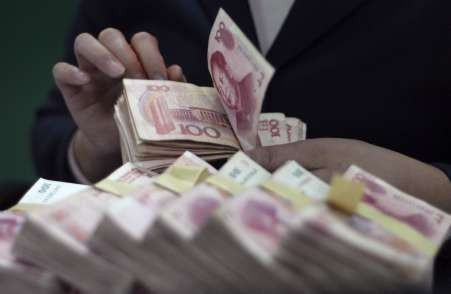Analysis: China to be a rates tortoise in Year of the Rabbit

China will be more tortoise than hare in its monetary tightening in the Year of the Rabbit, barely nudging up interest rates even as inflation races to new heights.
Unlike the fable in which the turtle's slow and steady pace wins the race, the lack of rabbit-like speed threatens to inflame asset bubbles as more and more Chinese decide that they have had enough of seeing their savings eroded in banks and invest it elsewhere, such as in property.
Aware of the danger, the central bank is trying to steepen the deposit rate curve to encourage people to lock up their cash for longer periods, but its chances of success are slim.
Deposits are not attractive to people who find prices for everything from vegetables to houses rising, said Gu Xin, a banker with Bank of China in Shanghai.
Investors forecast small gains in the country's main asset markets this year: a 5 percent rise in Shanghai's notoriously choppy bourse by June and about the same over the full year in property prices. Risks are firmly tilted toward the upside.
On the eve of China's Lunar New Year, Premier Wen Jiabao vowed this week to fight inflation and crack down on property speculators.
For all the harsh talk, though, he is not about to sign off on the interest rate increases needed to inoculate the economy from asset bubbles.
With one-year deposit rates at 2.75 percent and consumer prices seen jumping to an annual pace of 5.3 percent in January, inflation-adjusted deposit rates are set to fall to negative 2.55 percent.
Raising rates by 350 basis points, the amount needed to make them clearly positive in real terms, would wreak havoc on the economy and possibly fuel social unrest, a major concern for the ruling Communist Party.
Companies and local governments would have to pay higher interest rates and some of them wouldn't make it, said Dariusz Kowalczyk, an analyst at Credit Agricole-CIB in Hong Kong.
To make the best of its difficult situation, he said the government should bring forward intended rate rises for 2011 to the first half of the year as a way of anchoring inflationary expectations.
The central bank is already deploying an aggressive mix of open-market liquidity withdrawals, reserve requirement increases and lending restrictions, but the potent weapon of interest rates has formed only a small part of its arsenal.
It raised rates twice last year and analysts polled by Reuters expect just two more increases this year.
LONG-TERM FOCUS
Within the parameters of its mild tightening, the central bank has used asymmetric interest rate adjustments to persuade savers to keep a bigger chunk of their cash in deposits.
When it raised benchmark one-year interest rates twice last year by 50 basis points, the People's Bank of China increased five-year deposit rates by 95 basis points and kept rates on demand deposits, which can be withdrawn at any time, unchanged.
The message was clear.
The central bank wants people to move their savings from short-term to long-term deposits, but how effective that will be remains to be seen, said Stanley Li, a bank analyst at Mirae Asset Management.
Issac Meng, an economist with BNP Paribas in Beijing, said it was at least a step in the right direction.
By steepening the deposit curve, people will feel more comfortable keeping their savings in banks rather than pumping them into instant consumption and speculation, he said.
Not that China wants its consumers to spend less. Gross savings are equivalent to 54 percent of national income, the highest in the world, according World Bank.
Rather, the goal is to change the composition of savings. Deposits with terms of five years or more account for a mere 0.1 percent of all deposits, while demand deposits make up about 50 percent, bank analysts said.
DISCOURAGING PRECEDENT
Still, many doubt the central bank will make much headway.
It is wishful thinking. Years of experience have taught us Chinese that we suffer losses by putting money in banks as consumer prices rise much faster, said a manager at a China Construction Bank outlet in Shanghai, who asked to remain anonymous because he was not authorized to speak to media.
This is not the first time that the central bank has tried to tweak rates to influence savers' behavior.
When Chinese inflation spiked in 2007-08, it raised five-year deposit rates by 144 basis points and demand deposit rates by just nine basis points over nine months.
Yet it struggled to shift one-year deposit rates into positive territory, and time deposits fell by 367 billion yuan ($55.8 billion), according to official data.
That money coursed into demand deposits, which ballooned by over 380 billion yuan and, for a time, helped fuel soaring stock and property prices.
The precedent is discouraging for the Year of the Rabbit.
People see inflation eroding their savings, said Li at Mirae Asset Management.
© Copyright Thomson Reuters {{Year}}. All rights reserved.





















